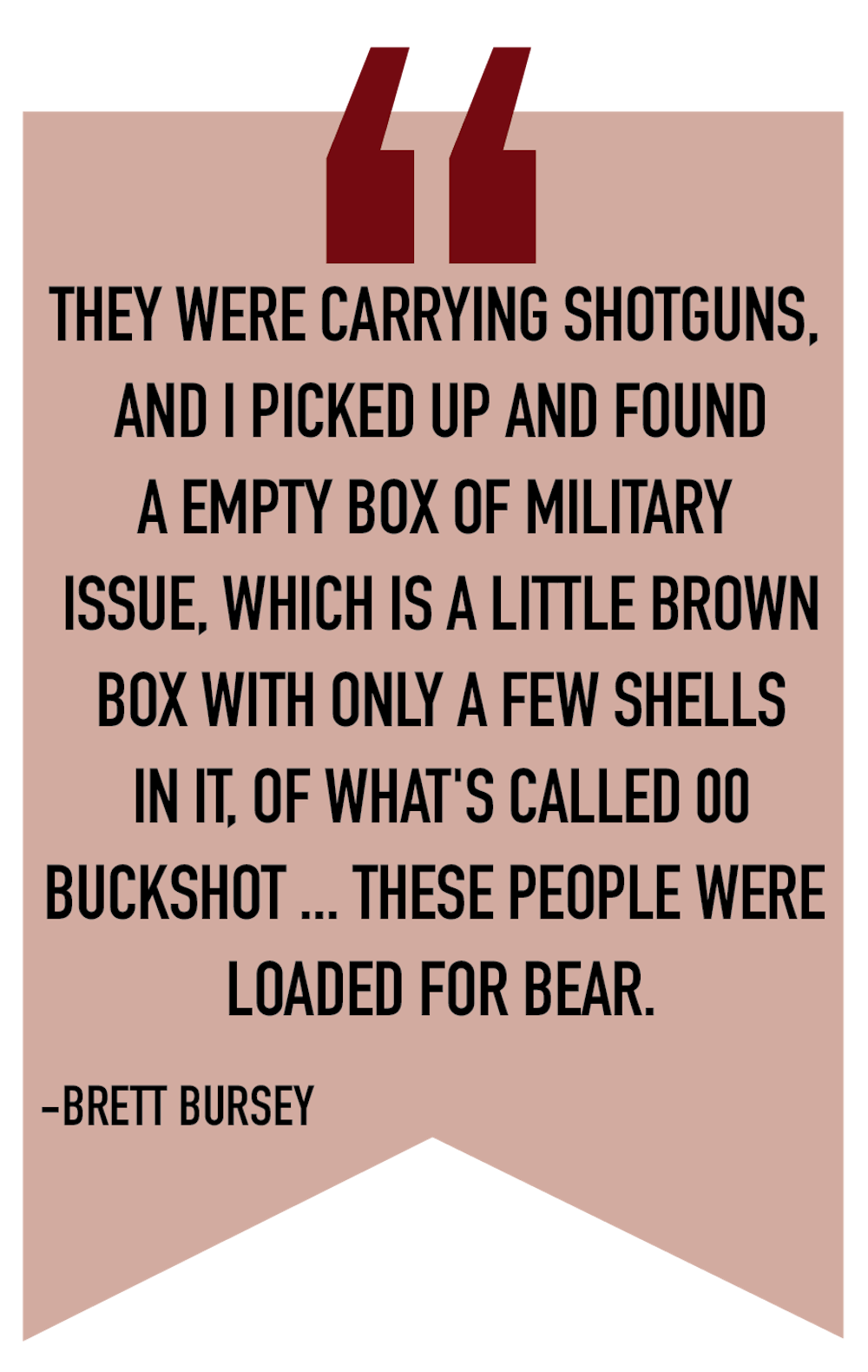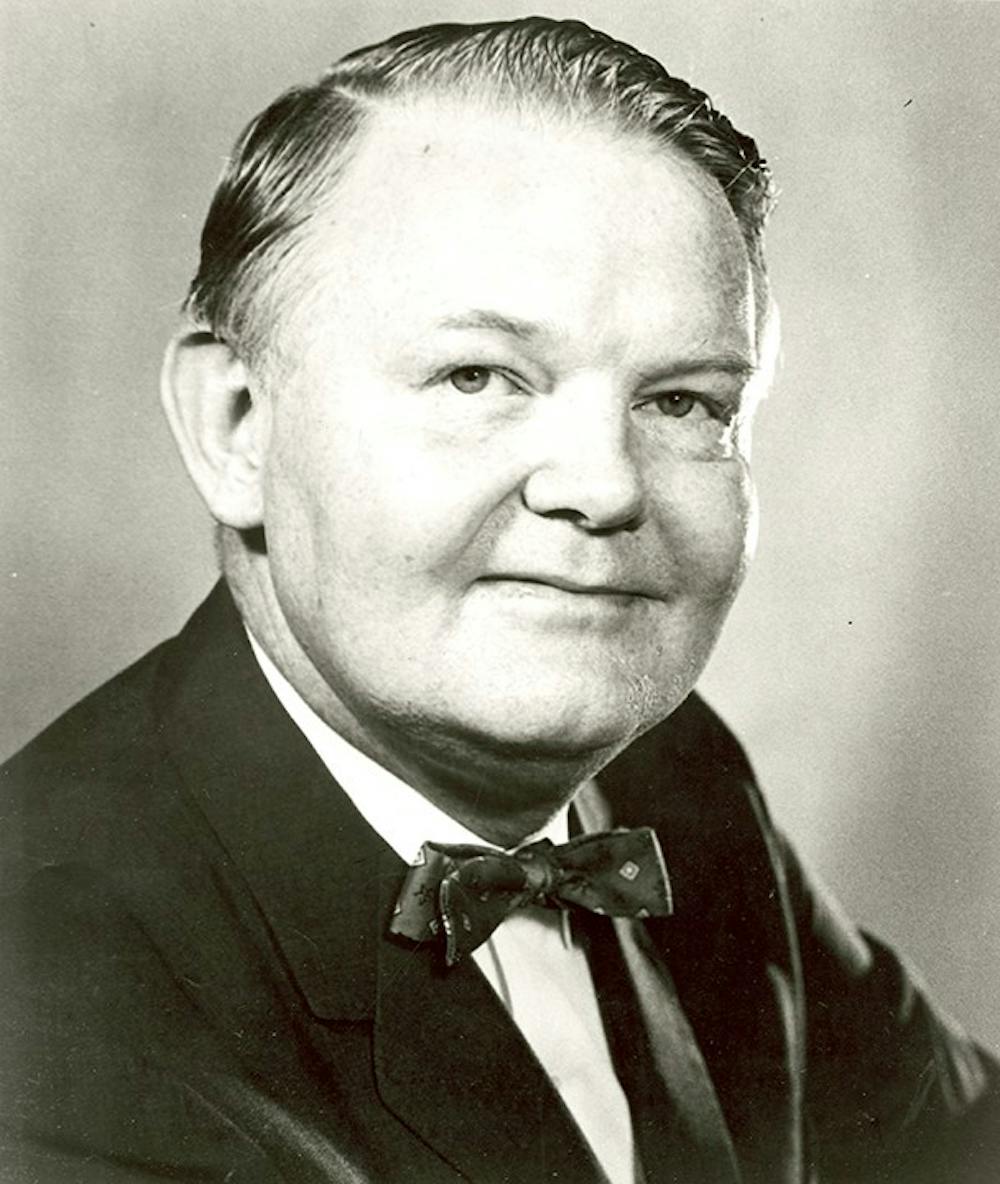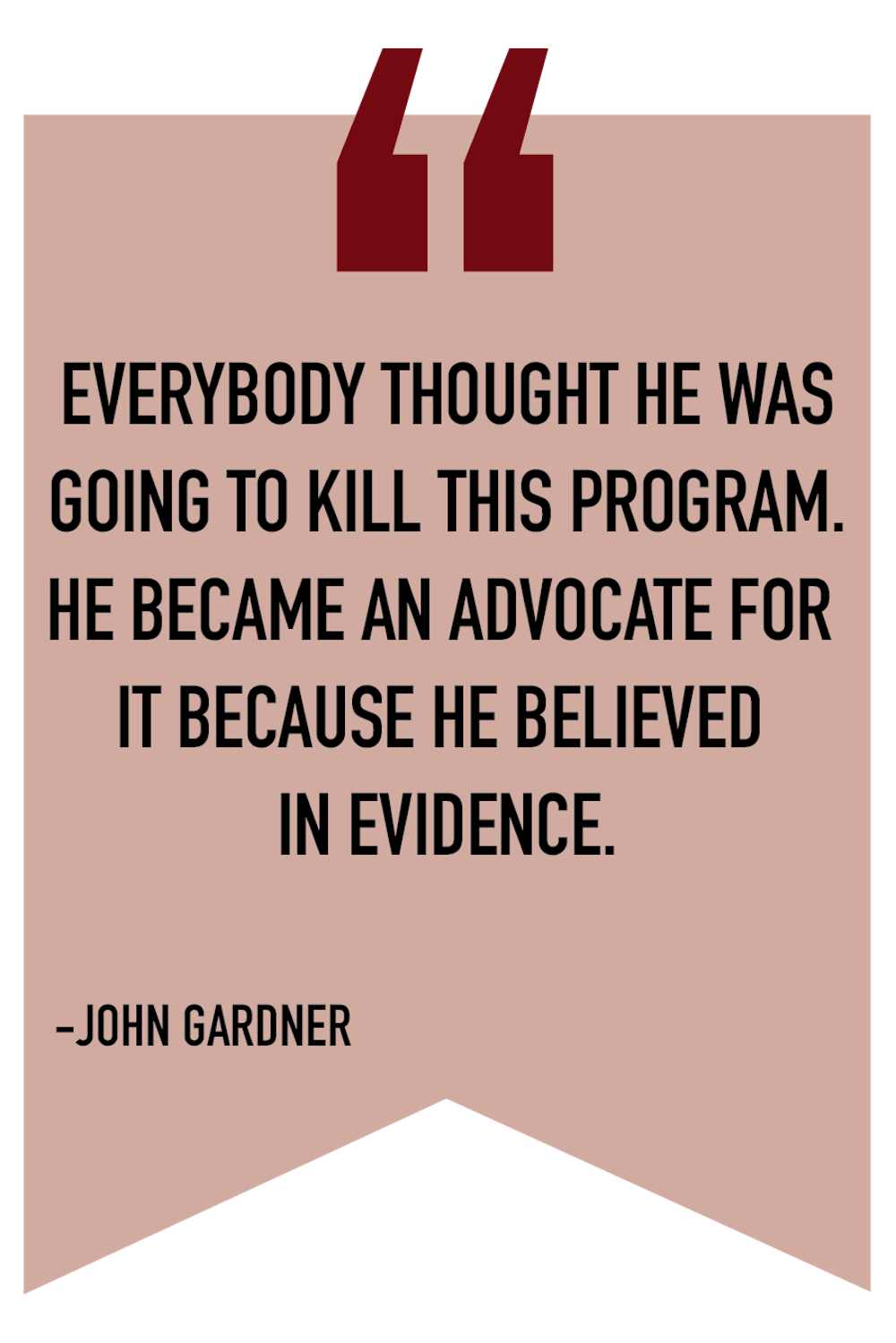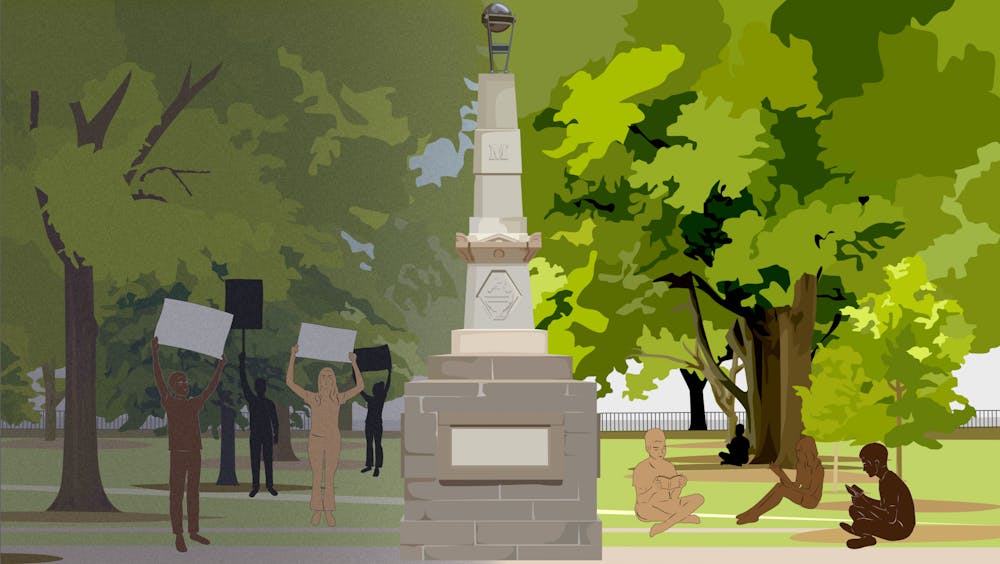University President Thomas Jones watched from the second floor of the Osborne Administrative Building as the National Guard cleared protesters from the Horseshoe. It marked the first and only time tear gas was used on campus. Something was terribly wrong.
Students were dissatisfied — dissatisfied with the Vietnam War, dissatisfied with plain-clothed policemen in Russell House, dissatisfied with student massacres at Kent State and Orangeburg. Everything came to a head in May 1970, when they took over the Russell House and, four days later, the Osborne building.
Jones was trapped upstairs alongside the board of trustees and Student Body President Michael Spears after protesters broke into and vandalized the first floor of the building. Students were angry, and Jones wanted to know why.
He would assemble a team of faculty and students to diagnose and address the problems, and from the clouds of dust and tear gas emerged the country’s number-one freshman seminar program: University 101.
The riots
The university was suffering from “growing pains,” the result of a rapidly increasing student population, according to university archivist Elizabeth West. Enrollment had nearly tripled over the course of Jones’ presidency, and a disconnect arose between administrators and students, who felt there was a lack of communication and understanding.
On May 7, 1970, student protesters joined hundreds of schools across the country in an organized strike.
“The majority of those demonstrations were on more liberal campuses: Columbia, Berkeley, Harvard, University of Wisconsin Madison,” John Gardner, the founding executive director of University 101, said. “When the students at USC decided to demonstrate, let me tell you what, that was big news because USC is in Columbia, the capital of one of the most conservative states in the country. This, some said, was the buckle on the Bible Belt.”
The strike was proposed to Student Government May 6, though memories surrounding the details are foggy. According to Brett Bursey, a lead protester, Student Government supported both the strike and the proposed takeover of the Russell House, which he said was no more than a coordinated effort to book rooms through the proper channels and host "teach-ins" on the war. Spears, however, said Student Government never approved of the takeover and only supported a “'strike' for academic freedom and protest of Kent State.”
Regardless, any potential approval was ultimately revoked when the South Carolina Highway Patrol was called in to arrest the students in Russell House.

“I announced that what was going on was not supported by Student Government, that all non-involved students were asked to temporarily leave the Russell House, that more than likely law enforcement was on the way, and if you’re still here when they get here, you will be accused of being a mob,” Spears said.
Bursey, who had been banned from campus after vandalizing a draft board, communicated with protesters via walkie-talkie from Longstreet Theatre. There, he saw the highway patrol arrive.
"They were carrying shotguns, and I picked up and found an empty box of military issue, which is a little brown box with only a few shells in it, of what's called 00 buckshot ... which is to kill large mammals," Bursey said. "These people were loaded for bear.”

Forty-one students were arrested in Russell House that day, with Bursey making 42. The protests only escalated.
Osborne was taken over on May 11 during the arrested protesters’ hearings with the board of trustees, resulting in the National Guard being called in and tear-gassing the Horseshoe.
Dormitories were also tear-gassed when students defied a 9 p.m. curfew. According to Bursey, students who had previously been against the protests began to shift sentiment when they were beaten, tear-gassed and arrested outside their dorms.
“There's a point where the oppression makes your point,” Bursey said.
The legacy
In the aftermath of the riots, Jones reasoned that if students could learn to love the university, then future transgressions could be prevented.
“Jones, who [the students] locked in his office, was realizing that students were not coming to the university angry, but something about the experience was causing them to get angry, and also realizing that faculty didn't understand students, and students didn't really understand faculty,” Dan Friedman, the current executive director of University 101 programs, said.

Spears and Student Body Treasurer Julianne Still Thrift worked with Jones in a series of retreats to discuss student concerns and how to better orient incoming freshmen. According to Spears, Still Thrift had “remarkably adult ideas” and led the conversations.
“When students like me were murdered at Kent State and the SC National Guard arrived on campus, my eyes opened. They never again closed,” Still Thrift said in an email interview. “Very different from today’s Carolina leadership, our Carolina President was a thoughtful scholar. Dr. Tom Jones was large in every way. With the Southern accent of his childhood, he loved us students and pointed us toward lives greater than our dreams.”
From these retreats sprang the idea for U101. In July 1972, Jones officially proposed the first version, a course devoted to easing students’ transition into college, and the faculty senate approved it for a one-year trial.
Gardner worked with Jones and 24 others in designing the course, and after it was approved for additional years, Gardner was appointed as U101 director. Unable to recover from the damage his reputation sustained as a result of the protests, Jones soon after lost a vote of confidence from the board of trustees and resigned in 1974.
The future of this fledgling course was up in the air. Jones’ successor, President William Patterson, announced he would evaluate several of Jones’ initiatives, including U101.

“Everybody thought he was going to kill this program. He became an advocate for it because he believed in evidence,” Gardner said. “And we had evidence.”
Upon evaluation, Patterson discovered University 101 was generating a higher retention rate.
University 101 continues to generate evidence today. It was named the No. 1 freshman seminar program by U.S. News & World Report in 2019. The retention rate for those who took U101 in 2017 was 89.2% compared to 85.8% for those who didn't, and excluding Honors College students, the difference was 88.9% to 82.9%. The six-year graduation rate has also increased, showing a difference of 76.1% to 73.3% in 2012, the last year the data was available.
"University 101 was a response to a current situation," Friedman said. "But we rebuild this course now every five years to make sure that it is responsive to the needs of the students and to the institutional priorities."
Three weeks before his death in 1981, Jones invited Gardner to his home. At that point, U101 was on its way to becoming a national model for other universities.
“He took both my hands with both his hands, and he said, ‘John, I want you to promise me one thing.’ And I said, ‘Yes, Dr. Jones, anything,’” Gardner said. “And he said, ‘I want you to promise me you will never give up this work.’”

